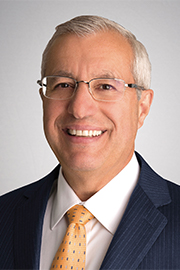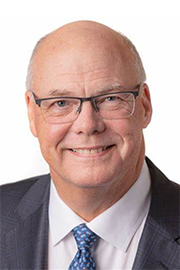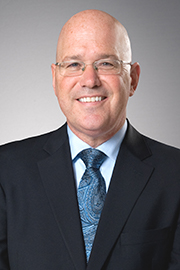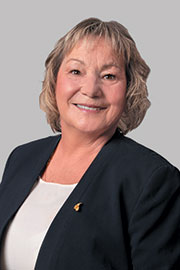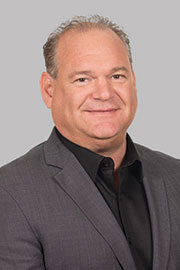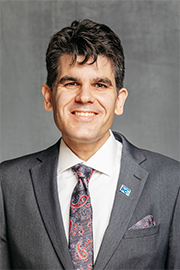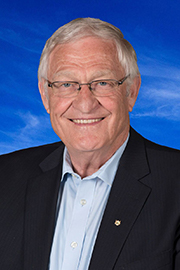- Feb/27/23 9:00:00 a.m.
I will note that I am sharing my time with PA Dowie and Minister Clark.
Speaker, there is no time to waste when it comes to securing major industrial investments that will employ generations of Ontario workers in good-paying jobs. We are constantly in fierce competition with other jurisdictions when companies consider making large investments in manufacturing and industrial operations, including multi-billion-dollar transformational projects.
You have to wonder, Speaker, how we got here, so a little of the history about why we’re standing here today looking to develop industrial sites: Quite frankly, it’s because the previous government, for 15 years, did not develop industrial sites. They sat on their hands and watched businesses leave Ontario. They sat on their hands and watched companies and other jurisdictions have all of these plants spring up and revitalize their communities and their states and their places overseas. This previous government sat on their hands. I’ll be very specific about this now.
First of all, the evidence is clear: 300,000 manufacturing jobs left Ontario under the Liberal government. That is just an absolute fact; it’s an undeniable fact. That’s the result of what the Liberals’ hand-sitting did. Let’s see how that occurred now.
In the long-term report on the economy—this is an annual report that is issued by the Minister of Finance. It comes out once a year and it gives the state of the economy, basically. There are quarterly reports that come out. The Liberals missed eight of them by the way; I just want you to recall that, that eight of them were missed. So we didn’t have a clue. They were trying to contain the damage that they had created by just not reporting to the people, as if we didn’t already understand how dire things were getting under them.
But in their final—thankfully, it turned out to be their final—report on the economy, it was clear, Speaker, that all they did was throw the towel in. They just gave up on manufacturing. They gave up on the workers in Ontario. The proof point of that—and I’m going to use my notes to quote the exact sentences from the report—is that in the Liberals’ report on the economy, they stated, “The structure of the Ontario economy will continue to shift from goods-producing to service-producing sectors.” Now, Speaker, we all know that this will result in—again I’m quoting—“shifting employment from goods-producing industries, in particular manufacturing, to service-sector industries.” This was their concept all along: They wanted Ontario out of the manufacturing. They put it in writing: “We want Ontario out of the manufacturing.” They no longer wanted us to be the economic engine of this entire country. They wanted us to find jobs in the service-producing sector, according to their own writing. This is exactly why we saw the hollowing out of the manufacturing sector: high taxes, high energy rates, red tape, all of the things that are anti-business.
To put a final cap on it in the auto sector, Speaker, we saw former Premier Kathleen Wynne sitting on a stage in Windsor with the then chairman and CEO of what was then called Fiat Chrysler, Sergio Marchionne. They were talking about why so many companies in the auto sector were leaving Ontario under the Liberals. She asked him, “Are you going to be expanding Chrysler?” And he looked quizzically at her. You could see it if you looked at any newspaper or if you watched it on TV or on the social media at the time. You would see him looking this quizzical look at her. And he said to her, “This is not what I would call the cheapest jurisdiction.”
They had doubled energy rates, increased all business taxes of every type. Red tape was piling up, strangling the business community. And then she asked a few more questions about it, and he finally said to her, “You need to create the conditions to be competitive.” You could hang that on the wall as a message to the incoming government.
Premier Ford took that message and said to his caucus, “We are going to do everything to create the conditions to be competitive, because that’s how we’re going to get the auto sector back, the life sciences sector back, the tech sector”—all of these sectors that were leaving Ontario. Some 300,000 people lost their jobs under that previous government. I don’t know how much louder you can say that to the government as we did in opposition day after day: “Don’t you see what you’re doing?”
So Premier Ford said, “That’s it, enough. We’re creating those conditions.” Many things happened. Number one, we visited every one of the auto plants, the Premier and myself. We sat with them and they told us exactly what Sergio Marchionne said, that you’ve got to lower the cost of doing business. We heard them loud and clear.
We came back and developed Driving Prosperity, and it’s the plan to bring back the auto sector. This is almost five years ago now. The plan was there and articulated. Number one: reduce the cost of WSIB. That’s your workplace safety insurance. That fund was so overstuffed with cash taken from the business community—so overstuffed that it far surpassed any financial requirements whatsoever. In fact, it far surpassed any moral requirements to keep that much money. So we reduced the cost of doing business by a 50% reduction in WSIB. That is a $2.5-billion annual saving to the business community that they are now reinvesting in their companies. That’s the first—$2.5 billion.
The next thing we did, Speaker, was put in an accelerated capital cost allotment. And what does that mean? When a company buys a piece of equipment, they get to write it off now in Ontario in-year, in the same year. That’s a huge financial savings to them. In fact, it’s a billion dollars a year that those companies are saving. Now that’s $3.5 billion.
Then we began with our red tape bills, meeting with the companies, asking them, “What pieces of red tape are duplicative with the feds?” Let’s take the highest, the most strictest of the two, and remove the other one. Then you only need to do your paperwork once. Those are the types of things. It’s over $400 million—in fact, in the last red tape report, they announced that it’s over $500 million annual savings in red tape reductions to these companies who we’ve seen, as you’ll see, are reinvesting that money here in the province of Ontario.
Then we reduced the province’s share of those companies’ local property taxes. Basically, we’ve standardized the taxes. Some came down 30%; some came down 6%. But we standardized it at 0.88% across Ontario and that saves $450 million every single year for these companies.
If you recall when we first got elected, in January the Liberals had a huge tax increase scheduled. We cancelled the tax increase. In fact, under this government, you will find no taxes increased, not even your hunting and fishing licences. Premier Ford and our party, we believe that lower taxes create jobs, lower taxes create wealth. High taxes kill jobs. We saw that under the Liberals. This is why we’ve done the reduction of the local property taxes.
Basically, we’ve pulled on every lever that a government has to lower our intake, to lower the cost of doing business. That now is over $7 billion annually in savings to companies right across Ontario.
So the Premier and myself got back in the vehicles and headed back to every auto company. We met with Toyota in Texas and Ford in Washington. We sat down and we laid this out for them. Here is Driving Prosperity: We’ve lowered the cost of doing business by $7 billion annually. That’s number one.
We have an ecosystem here in Ontario that is ripe for this EV revolution. We told them back then, “Look to northern Ontario.” We’ve got Glencore and Vale in Sudbury who are producing battery-grade nickel. We’ve got mines being planned north and south of Timmins, the gold town, that have found nickel. We have the Ring of Fire. Yes, there are mounds of chromite on the surface. We can move that aside and go deep and get the nickel. Then we look at northwestern Ontario, where there are four potential lithium mines.
We’re telling all of these companies, if you want to make electric vehicles, make them in Ontario, because Canada is the only jurisdiction in North America with all the minerals to make a lithium-ion battery. In fact, we have them all right here in Ontario. That was the first message.
The second message is: If you want to take that lithium and make lithium hydroxide, the liquid that’s necessary in an electric-vehicle battery, we have that expertise here in Ontario. We can set you up in northern Ontario near the mines, and we can do that with you. And as you come back to southwestern Ontario, where the auto companies are, you can build battery plants here. We have the ecosystem here. We have the technology. We have the expertise.
We told them we are producing 65,000 STEM—science, technology, engineering and math—grads every single year. You’ve got a steady stream of employees that can work at these companies. We have 700 parts makers in Ontario. We have 500 tool-and-die and mould makers in Ontario. We have 300 companies that are in the connected and autonomous sector in Ontario, including 700 or more employees at GM in Markham. Ford has 500 of these employees in Ottawa. BlackBerry QNX has 300 or more in Ottawa. Stellantis, formerly Chrysler, has more than 800 at their two new facilities in Windsor.
We’re telling them, “You can do all these things.” These are there today; they weren’t there when we were talking about them. You can do all these things. You can make all the components that go into a battery. You can make the cathode here. You can make the anode here. You can make the separator. You can make the copper foil. You can do all of that in Ontario. That is what we were telling them. We have the people. We have the expertise. We have the ecosystem. We have brought the cost of doing business down.
Canada has free trade agreements with almost 50 countries. If you make it in Ontario, you can export around the world almost exclusively tariff-free. If you make a battery in the United States and ship it, or you build a car in the United States and ship it to Europe, you’ve got either a 2.7% or a 10% tariff. If you build a battery or a car in Canada and in Ontario and ship it, you have no tariffs in Europe because of our free-trade agreements. We have agreements.
We have everything in place, but we need some land, because the previous government failed—miserably, I might add—to acquire large mega-sites of land. So, as we’re out around the world talking about all the great things in Ontario, we just need a few more pieces and that is these mega-sites.
We do know that, as a result of all of what we told these companies, all the investments that they are going to be making, when you think about—around the time we got elected, we did an analysis. There had been $300 billion dollars invested in North America in EVs. And under the previous government, zero came to Ontario. Zero out of $300 billion.
You look today and you will see that we have now announced $17 billion—$17 billion—in transformative automotive and EV investments: Ford in Oakville, Honda in Alliston, LG Energy/NextStar in Windsor, GM in Oshawa, GM in Ingersoll, Stellantis in Windsor, Stellantis in Brampton, Umicore in Loyalist. Magna just made their announcement: half a billion dollars into Brampton, Newmarket, Belleville, Guelph, Windsor, Penetanguishene. This is why Ontario is the number two automaker in all of North America. And it’s interesting, Speaker, that we are also the only jurisdiction in all of North America to have five major automotive assemblies, and I’ve just named them: Stellantis, Ford, General Motors, Honda and Toyota.
It’s interesting that not only are we the number two automaker, but we are the number two tech sector in all of North America. If you look at an EV car today, it’s nothing but a big computer on wheels. Well, isn’t it just great that we’ve got the opportunity to be the number two tech sector and the number two automaker—the two things that are needed to make these vehicles of the future?
As a result of all of these changes that we’ve made in Ontario—remember, 300,000 jobs lost in 15 years by the last government—today we are over 600,000 new jobs created in Ontario since the day we took office. We’ve got 100,000 employees alone who are in the auto sector. Since 2022, we’ve landed 150 deals alone, resulting in 7,500 new jobs just from those deals. And that included through our five trade missions into nine countries, when you include the States, Germany, Austria, Korea, Japan, Belgium—we heard a message, Speaker.
It’s really interesting: No matter where in the world we went, we heard two messages. The first was that in this really tumultuous world, where we’re just coming off of a two-year pandemic, where we have Russia’s illegal war in Ukraine and we’ve got this China issue that we’re trying to face—all this turmoil that everybody in the world is antsy about—every company said that they looked to Ontario as a sea of calm. We are a trusted, reliable partner. In all of this turmoil, they can look at Ontario and know that they’ve got a partner here that they can rely on.
The second thing they all said about Ontario was that it was safe. It was safe for their employees, safe for their executives, safe for their families. That’s how they view Ontario. No matter where we were in the world, those were the same two messages that we heard. We’re a trusted, reliable jurisdiction for everybody’s employees and everybody’s families, and that’s why we have this $17 billion in new announcements.
Now, a couple of the things that we talked about that are going in our favour: It’s this talented workforce—it’s all about the people. It really does come right down to the people. Look at Toyota; they won the J.D. Power best automotive plant in the world. That’s what we’re producing in Ontario. This isn’t the best Toyota plant in the world; it’s the best auto plant in the world. It’s right here in Ontario. It’s because we have a talented workforce. We have state-of-the-art research and development in Ontario. We have award-winning manufacturers. We have an abundance of critical minerals in Ontario’s north.
And this red tape reduction—this is really something. I talked about it briefly before, but we’ve taken 400 pieces of red tape that have been reduced. We’ve also done things like lowered your payroll costs and lowered electricity costs. We lowered commercial and industrial electricity rates by an average of 15%. That’s another $1.3 billion in savings.
The CFIB gave a Golden Scissors Award just recently for our At Your Service Act, which was part of the spring 2022 red tape bill. That’s because our government has brought in nine red tape bills and cut red tape. It’s over $500 million a year in the cutting of red tape.
- Hear!
- Rabble!
- Feb/27/23 9:00:00 a.m.
Good morning. Let us pray.
Prayers.
This being the first Monday of the month, I will ask everyone to join in the singing of the Canadian national anthem, followed by the royal anthem.
Singing of the national anthem / Chant de l’hymne national.
Singing of the royal anthem / Chant de l’hymne royal.
Mr. Fedeli, on behalf of Mr. Clark, moved third reading of the following bill:
Bill 63, An Act respecting the adjustment of the boundary between the City of St. Thomas and the Municipality of Central Elgin / Projet de loi 63, Loi concernant la modification des limites territoriales entre la cité de St. Thomas et la municipalité de Central Elgin.
- Hear!
- Rabble!
- Feb/27/23 9:20:00 a.m.
It is big money. It really, genuinely is.
When you think about our energy rates and the kind of energy we produce—we’ve all talked about this in the Legislature before—in Ontario, we have 94% clean energy. If you are making a battery in Ontario, you can also buy the clean energy credits and have your battery with 100% clean energy here in Ontario. It’s one of the few jurisdictions where you can do that.
If you’re in the States making a battery in Kentucky—I’m going to go back a step here. You’re buying an electric vehicle. You believe that you have made your contribution to society because you’re buying an electric vehicle in the US. You’re buying a green vehicle. Well, you’ve done one of those but not two. Yes, you bought an electric vehicle, it runs on a battery, but you have not bought a green vehicle. In Kentucky, a battery is made with 6% clean energy. They burn coal to make power to make a battery. How is that helping? In Indiana, you’re at 7% clean energy. Again, you’re burning coal to make power to make a battery. If you’re assembling vehicles in the US in a state that burns coal, you are not making a very green vehicle. Even though that vehicle is an electric vehicle and you think you’re driving a green vehicle, you are not driving a green vehicle. In Ontario, when our vehicles come off the line, you will be driving a green vehicle.
Here’s another reason why: Dofasco, which was burning coal to make steel, is now converting. With a half-a-billion-dollar investment by the province of Ontario, by the people of Ontario, Dofasco will be moving off of coal. That facility for making steel from an electric arc furnace is under conversion right this moment. Premier Ford and myself were down there only a few weeks ago looking at the conversion that’s happening. That means, with our half-a-billion-dollar investment, they are going to be making green steel.
So your car, bought in Ontario and made in Ontario, will have green steel, will have a 100% clean battery and 94% clean energy assembling that vehicle. You go back down to the States, you are nowhere near, not even remotely near, the same kinds of metrics.
Dofasco alone, by the way, converting coal to an electric arc furnace—that’s the equivalent down there of taking a million cars a year off the road.
So, obviously, Ontario is one of the very few jurisdictions that is indeed on track to meet the 2030 target of reducing emissions by 30%. In fact, greenhouse gas emissions are down 27% and counting.
We talked a little bit earlier about critical minerals and that now, for the very first time in the 120-year history of auto, northern Ontario will be included in the auto sector, because you need those minerals to make a battery. You need that lithium hydroxide, which could be made in northern Ontario from the lithium mined in northern Ontario—you could be making that. But for the very first time, the north is now part of the auto sector.
In fact, at a speech that I was giving in Sudbury a few weeks ago, I sat with the principals from Glencore and Vale and they were talking about battery-grade nickel. It was interesting. There was a nickel mine in Sudbury that had been shut down years ago because they couldn’t go any deeper; they couldn’t ventilate any deeper. But now, today—Onaping Depth it’s called—they’re spending $1.3 billion to open that mine up again because now they will run electric vehicles down there. They won’t have diesel. They won’t have any diesel down there so they don’t need that massive ventilation that couldn’t go any deeper. They will now use electric vehicles with lithium ion batteries to mine nickel to make electric vehicles with lithium ion. Talk about a closed loop here in Ontario. It’s absolutely amazing.
Remember I said $300 billion of electric vehicles, before our government got elected, had all gone to other jurisdictions in North America; zero in Canada. Just recently Bloomberg ranked Canada second in their annual global battery supply chain. Imagine: We’ve gone from zero; now we’re second globally in the supply chain. In fact, we are first in North America. We are ahead of the US, according to Bloomberg. That confirms that everything the Premier said that he wanted done is done. We have created the right conditions to attract investments, to create jobs and to remain competitive.
As a result of all of this activity, Site Selection magazine—it’s a very popular magazine that those in economic development follow. That magazine follows all of us as well. Ontario just recently earned Site Selection magazine’s number one ranking as the most competitive province in the nation. That is absolute news, and very exciting news. Companies around the globe are looking to Ontario for their future.
That award from Site Selection magazine—number one in the nation—is a very huge vote of confidence in the province of Ontario’s economy. But it focuses the light on our shortage of mega-sites that are prepared. We have lots of land in Ontario. We’re one of the largest jurisdictions in North America, size-wise. There’s lots of land here. Let’s be clear about that. Anything can be converted. But there’s a critical shortage of shovel-ready industrial mega-sites. That’s what we need in Ontario, and that places Ontario at a very significant disadvantage when we’re competing for high-value projects. That’s why we want to take immediate action so that we don’t risk losing any opportunities. We want all those cards on the table.
We talked about all the things before: the minerals, the people, the tariff-free. We talked about the STEM grads. We talked about the ecosystem. We talked about lowering the costs. All of those are in place, but we want to make sure that we have a fulsome inventory of serviced land. It’s really important not just to have it in the bank; we want it to be able to provide jobs for thousands and thousands and thousands more people.
We’ve seen the business community create 600,000 jobs. By the way, that’s 300,000 pre-pandemic, 300,000 since the pandemic. With 600,000 jobs already created in Ontario, can you imagine where we’re going to go in the future? We’ll have some serviced land. It will show that we’re not just open for business, as the Premier likes to say, but ready for business.
That’s why at the moment we are obviously in fierce competition with other jurisdictions for all kinds of investments. We’ve talked about this for days and weeks and months, that we are out there. You’ve seen us around the world trying to lure businesses here. There are 40 US jurisdictions right now who offer a certified mega-site program. That’s what we are contending with out there. Our key US competitors—Ohio, Iowa, North Carolina, Missouri, Tennessee—all have anywhere from 19 to 51 certified sites. These are shovel-ready sites. That says we’re ready for any potential investor. We need more certified, shovel-ready sites.
We’ve got to have those ready for when we’re travelling and luring prospects here. We can not only give the pitch that I’ve just outlined for you, but we can also tell them, “By the way, here is your suite of sites that are ready for you to choose.” That’s why, back in November 2019, we launched the Job Site Challenge program. It was Canada’s first challenge where municipalities, economic development agencies, industrial property owners—we asked them to put forward large tracts of land, anywhere from 500 to 1,500 acres, that could support a large-scale manufacturer. That’s what we asked for. Just for context, 500 acres—that’s almost 400 football fields, by the way. You can imagine what size 1,500 acres would be. We want to build an inventory of mega-sites that are investment-ready—take a look at the site and know we can go.
As a result of all of our economic development, travelling and some of the successes we brought in, we still have about $20 billion in the pipeline. We’re not going to win it all, but wouldn’t it be nice if we sure had a fair shot at every single penny of that? We’ve won $17 billion, and we’ve got more than that still in the pipeline. But again, many of those require a large-scale site. Companies are confident in the future of Ontario. That’s why we have that big pipeline. They’re confident in the future of Ontario; they want to be part of that future of Ontario. They want to be that future.
That St. Thomas site that we’re talking about is considered a highly attractive mega-site. It has been identified as one of the few potential mega-sites across the province. Why? Because it has large acreage; it’s in close proximity to transit routes and highways; it’s fully serviceable with electric gas, water, waste water; and it has been deemed to have a very high probability to sell to an investor.
The site that we’ve picked currently straddles two municipalities: the city of St. Thomas and the municipality of Central Elgin, which is in Elgin county. These two municipalities have different steps to permit. They have different permitting requirements. They have different timelines. It creates confusion and complexity for any potential investor, especially if they decided to build the building right smack dab in the middle of the property line. There’s a lot of unnecessary and burdensome red tape for investors, and it can also mean delays in timelines. Timelines cost money.
To unlock the full potential of this mega-site, we’re introducing legislation that would change the municipal boundary so that the site would be fully located in St. Thomas. That reduces the red tape, and it ensures that what we call the St. Thomas site truly is shovel-ready in the very near term for any potential investments. It would allow the city themselves and the province to proceed quickly with permitting, preparing the site to meet any potential investor timelines. It will allow Ontario to remain competitive as an attractive place to invest and grow. Those changes have the potential to bring significant economic benefits to the people of St. Thomas, Central Elgin and the surrounding communities. Of course, we’ll work closely with the affected communities with respect to any proposed legislative change, should they be passed.
Again, we’re going to continue to look for additional large-scale industrial sites around the province, because we are the ideal destination for any kind of manufacturers. We talked about $17 billion in the auto sector, but there’s also $3 billion in the life sciences sector that we’ve won in Ontario in the last two years. Billions in the tech sector—I used this example the other day: Telus alone is investing $23 billion in hiring 9,500 people in Ontario. Think about Nokia—the Premier was there to make the announcement of Nokia’s $340-million investment in Ottawa. Tech, life sciences, auto—we’re firing on all cylinders here, while we still have cylinders to fire on, in Ontario. Clean energy, critical minerals, world-class workforce, and now we need the last piece of the puzzle: mega-sites built throughout Ontario.
The window of opportunity to secure transformational EV sites is only open for a short time. Right now, all around the world, everybody is jockeying for position to make sure they’re near critical minerals or to make sure they’re near a workforce, to make sure they can go into a low-cost jurisdiction, to make sure they can go into a jurisdiction that has an auto ecosystem. All of those are in Ontario.
I’ve said this to many of our prospects around the world—I don’t know if I’ve ever said it in the Legislature, but I’ll tell you how I close when I’m speaking with an auto company around the world: It’s like a carousel going around. When that carousel stops, there won’t be a horse for everybody. That is my message to all of the EV automakers, battery makers, parts suppliers: The carousel is still spinning. We have all of the things that you need here in Ontario. We’ve got the critical minerals, but they’re going to be spoken for sooner than later.
All of these companies—battery companies, EV makers, parts makers—they’re looking today, right now, around the world. They’ve got to get located somewhere. They’ve got to get a plant built. They’ve got to get producing their parts and their products and their batteries and their vehicles to meet all of the deadlines that are out there. There’s not much more time for them to pick a site. They’re all doing it now. That window is open now, and it won’t stay open for long. That’s why Ontario has been so aggressive in looking to land all of these pieces of the EV revolution. We want them here now, because the time is now.
Speaker, thank you very much for the opportunity to speak. I’ll turn it over to MPP Dowie.
- Hear!
- Rabble!
- Feb/27/23 9:20:00 a.m.
Big money.
- Hear!
- Rabble!
- Feb/27/23 9:40:00 a.m.
I recognize the member from Windsor–Tecumseh.
- Hear!
- Rabble!

- Feb/27/23 9:40:00 a.m.
Je suis ravi de prendre la parole encore une fois sur le projet de loi 63. Ce projet de loi vise fondamentalement un résultat simple : créer un site d’emploi pour les Ontariens de toutes générations. C’était crucial d’avoir un site industriel prêt pour achever le succès chez moi à Windsor–Tecumseh, et particulièrement l’usine de batteries pour véhicules électriques de NextStar Energy.
Notre gouvernement connaît bien que nous avons un excellent site industriel à Central Elgin. J’espère bien que ce projet de loi passe par notre Assemblée et que la ville de St. Thomas et la population de la région seront bientôt les bénéficiaires des centaines d’emplois dans le futur proche comme résultat de notre décision.
C’est essentiel que les employeurs majeurs connaissent qu’un choix de s’établir en Ontario non seulement est profitable pour eux et pour les employés, mais porte aussi le moins de risques. Leurs décisions seront prises dans le futur proche quant à savoir si on devrait choisir l’Ontario, et nos décisions ici vont les influencer.
Dans ce gouvernement, nous voulons faire de l’Ontario un choix facile. Nous devons rivaliser contre et vaincre la compétition, parce que les régions qui sont nos compétiteurs sont transfrontalières.
L’Ontario est loin d’être le seul territoire avide d’investissement. Dans tout le Midwest américain, de nombreux États ont vu leurs propres industries se vider. Ils veulent que leurs industries reviennent. Ils compenseront les coûts et le travail interne de l’entreprise pour sceller l’accord.
Les entreprises évaluent les coûts, mais elles évaluent également la complexité pour eux autres. Elles veulent que leurs constructions et leurs opérations soient fluides. Résider dans deux municipalités distinctes ajoute une complexité qui n’est vraiment pas nécessaire.
C’est essentiel pour ces entreprises que leur site d’affaires soit adapté et facile à utiliser. Nos concurrents savent que le calendrier et les coûts de développement associés doivent être facilement connus et rationalisés pour respecter les délais du projet. L’Ontario doit être concurrentiel à cet enjeu.
J’utiliserai comme comparaison la juridiction à l’autre côté de la frontière de ma communauté : le Michigan. L’État du Michigan est en bonne voie avec son propre programme d’amélioration du site. Le programme de préparation des sites stratégiques permet aux municipalités au Michigan de développer des sites prêts à l’investissement. Le programme des fonds stratégiques du Michigan, qui est lancé par le gouvernement de l’État, prend en charge les dépenses de préparation des sites stratégiques et méga-stratégiques pour les investissements, y compris l’acquisition des terrains; la préparation du chantier; le développement des infrastructures; la démolition et construction des bâtiments; l’assainissement environnemental; et soutenir les frais d’architecture, d’ingénierie et professionnels.
Un site stratégique ou méga-stratégique peut appartenir à des intérêts privés ou publics, et peut être utilisé à des fins manufacturières et commerciales.
Le Michigan n’est pas seul. Prêt de 40 juridictions proposent un type de programme de certification de mégasites. D’autres juridictions ont des sites prêts à l’emploi pour le développement. Nous devons les rejoindre ou nous serons laissés pour compte.
Speaker, this bill is fundamentally about one outcome: to create an employment site that will employ Ontarians for generations. Our government created, in November 2019, the Job Site Challenge. It was Canada’s first program to include municipalities, economic development agencies and industrial property owners who put forward large tracts of land of up to 1,500 acres to build an inventory of mega-sites that are investment-ready and could support large-scale manufacturing operations.
My home municipality of Tecumseh was one of the first to sign up for the Job Site Challenge. Mayor Gary McNamara had been advocating for a program of this kind for many, many years during my time on council. I’m quite happy to see that such a program finally came to fruition at the provincial level, and that it was our government who heeded the call.
I will send my apologies to all my colleagues here for being a broken record from our debate on the second reading of the bill, but the point remains relevant for the $5.1-billion NextStar project. They located it on lands within the city of Windsor that were previously annexed from the town of Tecumseh. Windsor was able to establish a market-ready site here. This foresight was a game-changer that landed the NextStar plant. The simplicity of the transaction carried the day.
I will give my thanks to Minister Clark as well for his minister’s zoning order, ensuring that the risk inherent with this project from the planning process, that could have delayed the project and knocked our site out of consideration, was mitigated.
I would also like to thank Minister Smith for his minister’s order to confirm with certainty that the required electrical transmission lines would be brought to Windsor and Essex county as quickly as possible, following many previous years of delay.
During the recent election, there were many commitments to ending MZOs made by political candidates and leaders. This was, quite frankly, an incredibly bold pitch to make in our community: “Vote for us, and we want to end the best shot at prosperity that you have earned in decades.” Thanks to Ontario’s voters and those in Windsor–Tecumseh, I’m delighted that this was never put to the test. Adding risk is just not good business in our efforts to grow employment.
The proof of success is there with NextStar—and Umicore, as well, in Loyalist township. Ontario has demonstrated confidence in the future of our industry, and is instilling that confidence in industry.
The Central Elgin site offers prospective employers 1,200 acres of potential industrial development. When we have a critical shortage of shovel-ready industrial sites here in Ontario, it is vital that we secure sites like those in Central Elgin that are accessible for development quickly. We owe it to our residents to ensure that good employers can have a home here in Ontario and provide benefits to all of its employees. Indeed, it is a lack of shovel-ready mega-sites that keeps Ontario held back. This is not an issue, happily, for the Central Elgin site, and it quite frankly is long past time to make this site work for the benefit of the residents of Elgin county, the city of St. Thomas and the regions surrounding.
We need to get it done for the people of Elgin county and the city of St. Thomas, but also for the people of Ontario. Otherwise, we just risk losing the opportunity to compete for and win these transformative investments. These investments bring hundreds, if not thousands, of jobs with them every time.
Many of the currently planned electric vehicle and EV battery-related investments are expected to come online in the mid-to-late 2020s, meaning that the window of opportunity to secure these investments, which are transformative in Ontario, is right now. Losing these investments to other areas is not acceptable to the people of my riding. We’ve lost enough manufacturing jobs in my riding of Windsor–Tecumseh. It is long past time to start taking back these investments, and our government is doing so.
But we need to have a solid inventory of fully serviced industrial parks and shovel-ready sites. Bill 63 achieves just that for St. Thomas and for Elgin county. The purpose of Bill 63 is a simple land boundary adjustment. The site is in two municipalities, as the minister stated earlier: the city of St. Thomas and the municipality of Central Elgin. We can address unnecessary and burdensome red tape that adds risk to our efforts to land large employers by consolidating all the lands within the regulatory environment of the city of St. Thomas.
But Bill 63 is not an end by any means. We need many, many more of these sites to be developed, and that means beginning with goodwill. The province will work closely with all the impacted municipalities and First Nations communities for this site, and going forward as well, as we identify more large-scale industrial sites.
Speaker, let us keep Ontario as the ideal destination for advanced manufacturing and for EV battery manufacturers, powered by our reliable clean energy, critical mineral resources and, of course, our world-class workforce and research and development ecosystem.
- Hear!
- Rabble!
- Feb/27/23 9:50:00 a.m.
Thanks, Speaker. Good morning. It’s great to see you in the chair this morning.
I’m so glad that I’m able to share the government’s time this morning with the great member for Windsor–Tecumseh. I want to thank all of my colleagues for their support, but him particularly, for his advocacy in his riding. He’s a tremendous member. The people in his riding are very well-represented. Collectively, both the member opposite and the minister—we’re here for the same reason. We’re here to fight for jobs and investment, not just in Windsor–Tecumseh, but in all of Ontario.
I’m particularly pleased with my colleague the Minister of Economic Development, Job Creation and Trade. Vic Fedeli works tirelessly to attract jobs and investment across our province, Speaker. The minister outlined that our government has a record that I think we can all be proud of when it comes to attracting both jobs and investment to Ontario. With his wonderful enthusiasm, I think we can all acknowledge that we have no intention as a government to slow down.
The legislation in front of us this morning—I know some of the members opposite raised the question last week of why we’re acting so quickly. I take those questions very seriously. The answer is very simple: Ontario is a prosperous, growing province. We’ve got a great record for investment, jobs and growth, but our government is not going to just sit back and be content with the job that we’ve done. Our job isn’t done. We’re taking an all-of-government approach to build Ontario, to attract major new investment to our province.
You can see, Speaker, that this approach is carried through with many, many ministries right across government. My colleague the Minister of Economic Development, Job Creation and Trade is leading our government’s efforts in attracting companies from around the globe to invest in Ontario. My colleague the Minister of Labour, Immigration, Training and Skills Development is making sure that Ontario is equipped with workers that have the skills and is, really, creating the workforce to carry out these jobs. My colleague the Minister of Transportation is making sure that Ontario has the transportation network that’s ready to move more goods and people safely and efficiently from across the province. My colleague the Minister of Infrastructure is making sure that we have the right supports in place to attract and expand business in Ontario.
My own ministry is focused on the challenge. We’re taking some major steps in the Ministry of Municipal Affairs and Housing to attract—and attack—more homes and better supply and to be able to create an environment where we can build 1.5 million homes by 2031.
We want to make sure that workers have a safe, attainable place to call home. I carry out this work alongside my ministry colleagues, my government colleagues, including my Associate Minister of Housing and my parliamentary assistant, the member for Thunder Bay–Atikokan. Speaker, the bill that we’re debating this morning should be seen in that light, that whole-of-government approach to attract investment and those good-paying jobs to Ontario. Because not only is it my ministry that’s working to get more homes built faster, but we’re working with all of our municipal partners—all 444 municipalities—to reduce red tape and bring in the sort of investment that will benefit workers, municipalities and our communities.
I’m so pleased with the initial response that we’ve seen to this legislation. There’s a clear recognition from so many Ontarians that everyone benefits with this sort of investment that we’re attracting here today.
I’m also pleased by the widespread acknowledgement from Ontarians that we need to pull together in a global economy that sees fierce competition for jobs and investment. We know that trade and international partnerships have long been an important part of Ontario’s economic success. But we’ve also seen that some countries around the world have pulled up the drawbridge in recent years. They’ve implemented protectionist measures that put Ontario jobs at risk.
Faced with this challenge, our government and its partners need to do everything in their power to attract investment and provide those good-paying jobs that Ontarians need. That of course means that we need to ensure that we have the housing, the transit, the infrastructure and the workforce to attract investment. But it also means that we have to deal with the unnecessary bureaucratic hurdles that come in front of major investments to our province. We’ve got to do everything in our power.
I’ve had the opportunity to visit southwestern Ontario many times as minister and as an MPP, including Elgin county. It’s really ripe for that investment. The member for Elgin–Middlesex–London, sitting beside me, is a fantastic representative and he knows that the location of this site is ideal. It’s fantastic to have major highways connecting St. Thomas and Elgin county to the rest of Ontario and beyond, to the rest of Canada. It’s just a few hours from the major markets in the United States and ports that can accommodate Ontario-manufactured goods across the world. It’s also in close proximity of some of Ontario’s leading universities and colleges.
With a skilled and capable workforce, it’s already a powerhouse. His riding is a powerhouse in advanced manufacturing already. It’s such an exciting opportunity for our government and our province to have a chance to demonstrate to potential investors around the world that Ontario is truly open for business, because we know that by getting it right at this site, we can attract more investment in every single corner of the province.
As I wrap up—I look forward to questions—I want to once again reflect on the why: why our government is moving forward so boldly with our plan to build and grow Ontario. The last few years have been challenging for many Ontarians. We faced an unprecedented global pandemic. We’ve struggled with supply chain troubles. We’ve coped with global upheaval all around us. But despite these challenges, I’m so very proud that Ontarians came through stronger than ever. We’ve shown what makes our province so great.
But these challenges have also shown us that there’s the need for more manufacturing. We need to invest in manufacturing. We need to ensure that our government and all levels of government are doing their part to support made-in-Ontario products. We know that further development in our province’s manufacturing capabilities will help Ontarians prosper in good times and protect them from economic fallouts in uncertain times.
Now we have a real opportunity to showcase the very best the province has to offer, to showcase why, in a world facing so many challenges, Ontario is the right place to invest. Our province is an ocean of calm when so many other parts of the world are facing turmoil. We have the skilled workforce. We have world-class infrastructure to support this investment. The investment, in turn—what does it mean? It means good-paying jobs. It means growing communities. It means prosperous businesses. It means thriving families. That’s something that everyone—no matter what side of the House, no matter what political ideology, political spectrum you have, you can all come forward. You should all be able to support this. I hope, as we move forward toward a vote on this important piece of legislation, that all members will do precisely that.
I just want to say that this is very important. Time is of the essence. Minister Fedeli has outlined very importantly this morning how many other jurisdictions have already done this. They’ve already created a mega-site. They’re already investment-ready. There are dozens of jurisdictions in North America that are looking to us today. We’ve had tremendous success, but we need to move fast. The people in St. Thomas and Central Elgin—this bill will provide that opportunity for our government. It will ensure that we have a site that can compete tomorrow, that has access to the world. We need to understand that if we’re going to be in this game—and I want us to be leading, as Minister Fedeli and the member for Windsor–Tecumseh have talked about this morning—we need to move forward. I appreciate the speed in which the House has moved to get us here for a third reading.
I, in turn, can commit that our government is continuing its relentless focus on attracting investment, on supporting Ontario families, on working for workers and for building Ontario. I look forward to the debate. I hope it’s as quick a debate as we were in the second reading because time is of the essence. We need to move forward.
- Hear!
- Rabble!
- Feb/27/23 9:50:00 a.m.
The Minister of Municipal Affairs and Housing.
- Hear!
- Rabble!
- Feb/27/23 10:00:00 a.m.
Thank you, Speaker. It’s a pleasure to see you this morning. Good morning.
It is a positive development when a municipality can find a way to support their communities with jobs. In St. Catharines, General Motors has announced that they will add 500 jobs by investing in EV and the auto sector at their plant. I’m excited and optimistic about the auto sector. I’ve spoken to GM, and this news is subject to support agreements from the federal and the provincial governments. It makes sense to get this moving as fast as possible. We are a proud automotive town in St. Catharines.
My question is to the minister: Given the subject today, can you please update us on the support agreement and timelines from the provincial government’s investments in supporting adding those auto jobs to St. Catharines and Niagara?
- Hear!
- Rabble!
- Feb/27/23 10:00:00 a.m.
Questions?
- Hear!
- Rabble!
- Feb/27/23 10:00:00 a.m.
Good morning, Speaker. Myself and the MPPs for Ajax, Durham and Pickering–Uxbridge, we hear all the time about the incredible talent in the region of Durham that exists—young STEM graduates and hard-working people in the skilled trades, and particularly innovative and excited entrepreneurs, because they know what’s on the horizon. We know what has been created by the Minister of Economic Development, Job Creation and Trade.
My question, Speaker, through you to the parliamentary assistant is, can the member elaborate on the type of investments Ontario is attracting thanks to the competitive edge that we have across Ontario but, in particular, in the region of Durham?
- Hear!
- Rabble!
- Feb/27/23 10:00:00 a.m.
A question for the Minister of Municipal Affairs and Housing: We all want more good-paying manufacturing jobs. My father worked at General Motors, and we certainly had the benefits of that growing up.
This bill is essentially taking land from one municipality and putting it in another for the purposes of streamlining and attracting an investor. I think we all support that and understand the speed with which we want to do this as well.
I remember reading back in July, I believe it was, that there were some disputes between municipalities as they were assembling this land. Can the minister tell us have all of those disputes been resolved or are the municipalities neighbouring all in support? Are there any outstanding issues?
- Hear!
- Rabble!
- Feb/27/23 10:00:00 a.m.
Speaker, through you to the member: We’ve got a general shortage of quality industrial land in the province, as the member knows. He’s a former municipal politician. There are ongoing negotiations that have to take place between municipalities. It’s a very big site.
I have the confidence of the Minister of Economic Development, Job Creation and Trade that he will continue that conversation between Central Elgin and St. Thomas. Those conversations are not over; he will continue to engage both sides.
But really, Speaker, again I want to reiterate to the member and all members that there is no time to waste when it comes to securing major industrial investments that will employ generations of Ontario workers in good-paying jobs.
- Hear!
- Rabble!
- Feb/27/23 10:00:00 a.m.
I appreciate the question from the member. Really, we have seen tremendous investment. I mentioned the NextStar Energy and Umicore investments to start, but we also have tremendous other opportunities that are in the pipeline.
As the minister noted, not all of them will come to fruition. However, think of the $2 billion in investments by global biomanufacturers—Sanofi, Resilience and Roche pharmaceuticals—and $17 billion in investments by automakers and suppliers of EV batteries and battery material. You’ve heard of LG Energy Solution, Stellantis, General Motors, Honda, Ford, Umicore, Magna, Nokia—$340 million investment to build in Ottawa. So the investments are coming in thanks to the government’s proactive efforts to attract investment. I thank you for the question.
- Hear!
- Rabble!
- Feb/27/23 10:10:00 a.m.
I just want to thank everyone for their speeches this morning. I was quite excited when I was listening to the Minister of Economic Development, Job Creation and Trade talking about the great things coming forward for our future. Part of our role here in government is to create the environment so people will invest in Ontario, so people will move and we can attract business.
My question is actually to his parliamentary assistant, the member for Windsor–Tecumseh. I’m wondering if you can elaborate on some of the efforts this government has made to date to attract jobs and ensure that Ontario is where it should be so people will move here and stay here once they’re educated—because we want to make sure we maintain that intelligence—and people will live in Ontario to raise families. How are we getting those new companies here?
- Hear!
- Rabble!
- Feb/27/23 10:10:00 a.m.
I’m sure that the member can follow up details around the agreement with Minister Fedeli. But I do want her to know that we’re on a mission to secure transformative, generational investments, particularly in manufacturing, auto and EV sectors, to ensure that good-paying jobs will be available for generations.
In auto and EV investments alone, the government has secured $17 billion in investments in just two years, with more to come. I know the member is very passionate about those jobs in St. Catharines. I can tell her that Minister Fedeli is equally passionate about them.
But at the same time, the member talks about the speed with which this bill is here. We’re currently in contention for several major manufacturing investments that require large sites with a specific set of criteria, with close to 40 US jurisdictions that offer some type of certified or mega site. We need to house those projects. We need to make sure that the province is pursuing them. That’s why we are here. That’s why we are moving quickly.
- Hear!
- Rabble!
- Feb/27/23 10:10:00 a.m.
Thank you very much, Madam Speaker. It’s nice to see you in the chair today.
My question to the minister today would be about process, and the process that a bill moves through in the Legislature. We know that this bill came very late last week and here we are, already at third reading. The committee process has been skipped over due to other circumstances. I would like to know if the minister and the government have done the full consultation process with the community. There are two communities involved in this process. We’re in favour of this moving forward, but we also think it’s important that the community has the opportunity to have its say.
Did the minister do a full consultation process with all of the community and allow people to have their opportunity to speak?
- Hear!
- Rabble!
- Feb/27/23 10:10:00 a.m.
I rise today to congratulate a good friend of mine, Doug Wagner, on being a 2023 Ontario Agricultural Hall of Fame inductee. It’s a fitting honour for someone who has spent 45 years dedicated to developing and growing the agriculture and agri-food industry in Ontario. Through his work with several organizations, including the Ontario Seed Growers’ Association and the International Plowing Match, Doug has left a lasting impact on agriculture in Ontario.
Perhaps one of his greatest legacies is Canada’s Outdoor Farm Show, which he launched in 1994 with Ginty Jocius, giving the industry a permanent site for an outdoor show.
Since then, he has continued to be involved with the farm show, becoming president in 2012 and helping it grow into eastern Canada’s largest outdoor farm show. As president, he also helped coordinate the purchase of 100 acres of provincial land to create Discovery Farm Woodstock and make it the permanent home of the farm show. He retired as president last year.
Doug has always known the importance of creating future agriculture leaders. After graduating from Ontario Agricultural College, he worked in the youth extension arm of the Ministry of Agriculture and Food. He also continues to passionately share his knowledge through 4-H Ontario and the Junior Farmers’ Association of Ontario.
Congratulations again, Doug, and thank you for your lifelong commitment to Ontario agriculture.
- Hear!
- Rabble!
- Feb/27/23 10:10:00 a.m.
Questions?
Third reading debate deemed adjourned.
- Hear!
- Rabble!
- Feb/27/23 10:10:00 a.m.
I received a letter in the mail from Judy P. in Oshawa. She says, “I’m not normally what I’d describe as an activist or prone to protesting against my government, but never in my life have I felt more compelled to very strongly voice my objection, disbelief, and frankly horror over the policies of Premier Doug Ford....
“I feel the need to fight for our health care for my children, grandchildren, family, friends, and all fellow Ontarians. Premier Ford appears to be intentionally trying to cripple our previously world-class health care system in order to make private health care look like it’s our best option. His promise to end hallway medicine has failed and turned into parking lot medicine. Never in my life have I had to worry about an ambulance not being available or a hospital not having an empty bed. Never have I had to worry about delays in surgeries or treatments and yet, this is now Ontario. People are dying. Premier Ford has said that he would never do away with public health care for Ontarians. But he’s whittling it away and heading for a two-tiered system. And we know private facilities would get the cream of the crop in resources and personnel, making it one gold-level system for the haves, and a much poorer system for the have-nots. This will mean more Ontarians living on the edge will suffer and even die. What a legacy!”
She goes on to say, “Our health care is something I remember my parents being so proud of. Universal health care came about when I was a young child. It sets Canada apart from many nations. We used to be a shining example that other nations looked to with envy....
“We can’t afford to lose our universal health care. It’s part of what makes Canada a great place to live.”
Well, Judy, we have a hell of a fight on our hands to save medicare. Thank you for your strong letter. I’m in the fight with you.
- Hear!
- Rabble!

